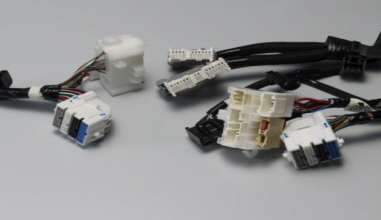Chemical reports
Four Things You Need to Know About How Colors Impact Consumer Choices
작성자 : Aeyoung Park
2018-03-19 |
조회 : 4357
Four Things You Need to Know About
How Colors Impact Consumer Choices


Color has long been a critical component in marketing a vehicle to consumers. Interior and exterior color schemes play a vital role in the showroom-floor appeal that turns a casually browsing customer into someone who develops a connection with a vehicle and ultimately purchases it.
But it goes deeper than that. For decades, manufacturers of automotive components, and of the vehicles themselves, assumed that color appeal was the product of personal preference. One could make some basic generalizations — for instance, manufacturers long believed that women tended to prefer brighter colors and pastels, whereas men preferred colors that were darker, more muted or metallic in hue. But for the most part, it was believed to be an individual preference.
However, recent developments in the understanding of sensory perception have begun to give rise to a revised theory. Researchers have found that colors have underlying meanings in the human subconscious, and the ways in which manufacturers use color can profoundly impact whether a vehicle sells and who purchases it. Here are four things you need to know about the impact of color on consumers’ buying decisions and how you can use it to your advantage.
Colors Send an Emotional Message
Advancements in materials technology have given suppliers an unprecedented palette from which to create automotive components, and as a result, they can create interior-exterior color combinations that were impossible in previous vehicle generations. Suppliers can now fashion bright orange seats to match the bright orange exterior of a sports car, and instrument panels and headliners can be created in virtually every color of the rainbow.
This gives manufacturers great power to influence the look of a vehicle but also presents a new set of challenges. In order to use color responsibly, component manufacturers need to understand how consumers perceive color and the emotions that colors create.
Branding research has identified a number of perceived descriptors that consumers tend to connect with various colors. Here is a sampling.
- Bright red: Optimistic, dynamic, energizing, exciting, sexy, intense, stimulating, aggressive, powerful, energetic, dangerous
- Burgundy: Vigor, elegance, richness, refinement, leadership, maturity, expensive
- Blue: Truth, healing, tranquility, stability, peace, harmony, wisdom, trust, calm, confidence, protection, security, loyalty
- Green: Nature, envy, healing, fertility, good luck, hope, stability, success, generosity
- Brown: Stability, masculinity, reliability, comfort, endurance, simplicity, friendship
- Navy: Dignity, credibility, strength, authority, conservative, trustworthiness, traditional, quiet, confident, serene
International Markets Require Careful Color Choices
To operate in a global marketplace, manufacturers need to recognize cultural differences in color perception. A color that has a positive interpretation in one country can be received very differently in another. For instance:
- Brown is the color of mourning in India. In Colombia, it is considered an undesirable color and can discourage sales.
- In predominantly Catholic Ireland, orange is the color of Protestantism.
- In some tropical countries, green is associated with danger.
- In some cultures, certain colors are celebrated.
- In China, red is associated with good luck, while in India it’s associated with purity.
- Blue signifies immortality in China. To Hindus, it is the color of Krishna.
- In some Asian cultures, bright yellow is a sacred imperial color.
Different Demographics Require Targeted Color Strategies
Once a manufacturer understands the meanings of different colors, those meanings can be used to create a connection with the target market for the vehicle. This connection helps to foster an understanding of each segment. Vehicles that attract women in their 20s require a different approach to color usage than vehicles that attract men in their 50s.
Younger women are frequently drawn to colors that strongly signify femininity, such as pastels and floral hues. They’re also strongly drawn to color as a mode of personal expression. It’s perhaps most notably illustrated in the modern incarnation of the Volkswagen Beetle, which contains a special clip near the steering wheel, used for holding a small flower vase, often used to display a flower that mimics the color scheme of the car.
Middle-aged men, by contrast, are frequently drawn to color combinations that convey strength, stoicism and, particularly in the luxury vehicle market, wealth. When these men purchase expensive cars, they want the appearance of the vehicle to reflect the price paid.
That means rich colors that are evocative of expensive materials such as hardwood, leather and precious metals. In the high-end sports car market, the darker hues of the luxury market are often replaced by traditionally aggressive sports car hues such as red and black, but the message of wealth remains consistent.
You Need a Color Usage Plan
Color usage is a process with a lot of variables, and those variables can change as trends and tastes evolve — in addition to differences in cultural significance when marketing abroad.
With that in mind, manufacturers in the automotive space should formulate a plan for utilizing color in automotive components.
- Understand the market. Gain a clear understanding of the demographics targeted by each model, and how those potential consumers connect with color. Observe and analyze color trends that are emerging in other industries, such as fashion and consumer goods, as these trends can point to current customer preferences.
- Devise a color plan that takes into account all aspects of the vehicle. Different car models, and different consumers, connect with different types of color usage — not just with the colors themselves. In a sports car, the interior color scheme may have more elements that match the exterior of the car, which is often an aggressive or eye-catching color such as red, orange or bright blue. In a luxury sedan, consumers are often seeking a statelier interior with soothing colors, regardless of the exterior color.
For more information on using color to effectively capture and hold consumers’ interest, contact PolyOne or visit invisiocolor.com.
Source: PolyOne




















